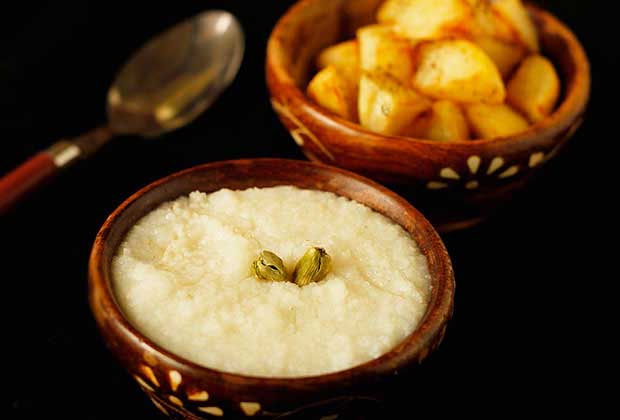How To Break Your Fast The Sindhi Way This Navratri
- By Alka KeswaniLoading...
- | 29 March 2020 4:30 AM GMT
 X
X
Ekaana or Navratri, the nine days of worshipping nine incarnations of Goddess Shakti, is celebrated twice a year by Sindhis. Nanda Ekaana being observed during the month of Chet (Chaitra) (March-April) and the Vadha Ekaana, in the month of Assoo (September-October), Sindhis refrain from many regular rituals like cutting nails or hair, shaving, consuming non-vegetarian food and alcohol. Many Sindhis will not buy any property, jewellery or even clothes during this period. The shopping for marriage trousseau is strictly avoided too.
The eighth day of Navratri, known as Ashtmi is considered as a day to invite home young girls, who are yet to attain puberty and offer them satvik (no onion, no garlic) food particularly Kheerni Puri (vermicelli kheer with whole wheat flour pooris) and seek their blessings.

Growing up in a neighbourhood with significant number of Gujarati families, it was not uncommon for us to spot women (and men too) wearing traditional clothes, swaying to the rhythmic beats of the dhol and percussion instruments doing dandiya or garba. That was the era when DJs were unheard of, and people irrelevant of their caste and creed would jump in to do some raas. The circle of garba or dandiya dancers would expand as and when the onlookers got confident enough to pick up the rhythmic moves.
There were hardly any pandals as such, and most of the times the colonies would pick up a fairly open space to celebrate each evening during Navratri and dance to the glory of the Goddess of power. There was no discrimination based on religion, financial status or gender, no entry fees, no pompous pandal decorations and the festival was often devoid of any political hue. Some classmates used to bring ‘fasting food’ in school, which used to taste very different from their regular dabba meals. Well, now I know the reason!
The food eaten during Navratras is satvik, and devoid of grains and legumes. Pseudo grains like Amaranth, buckwheat, wild rice et al are profusely used though. The water chestnut flour (singhare ka atta) is one of the most popular flour that is consumed during Navratri followed by Rajgira (Amaranth flour), and Kuttu (buckwheat) that are used to cook a wide variety of fasting foods. Junglee rice or sama/samo is also used by the Sindhis to make savoury and sweet dishes.
Samo or Baghar is used to make Kirngu, a porridge, that could be made savoury or sweet, and is often served with pepper-flavoured fried potatoes. It is generally served as a breakfast dish on Ekadashi.
Recipe for Kirngu Patata or Samo porridge with potatoes (serves 3)
Ingredients (for the sweet version)
½ cup samo seeds
4 cups of water (can substitute half of the quantity with milk)
3 - 4 tsp sugar (or as per taste)
1 tsp ghee
2 green cardamoms (crushed)
Method
1. In a pan, heat 1 tsp of ghee and add crushed cardamoms followed by samo seeds. Roast on low flame for a minute or so.
2. Add water and mix well. Cook on medium flame till the mixture resembles a loose porridge (5-8 minutes).
3. Add sugar, mix and cook further till the mixture is thick.
4. Serve hot with fried potatoes flavoured with sendha namak (rock salt) and black pepper powder.
To make savoury Kirngu, follow the same method except instead of sugar, add sendha namak and omit milk and cardamom. Garnish it with black pepper powder and serve it with fried potatoes and fresh yoghurt.
Alka Keswani is a microbiology graduate, a hands-on mom and food blogger. Besides contributing articles to various magazines and newspapers, she has also co-authored a food section in ‘We The Sindhis’ book. Her blog Sindhi Rasoi won the Best Regional Food blog in 2013 and Best Vegetarian food blog in 2014 at the Food Bloggers Association of India awards. She also manages another blog called Recipeonclick for non-Sindhi recipes.
Follow Alka on Twitter @Sindhirasoi




